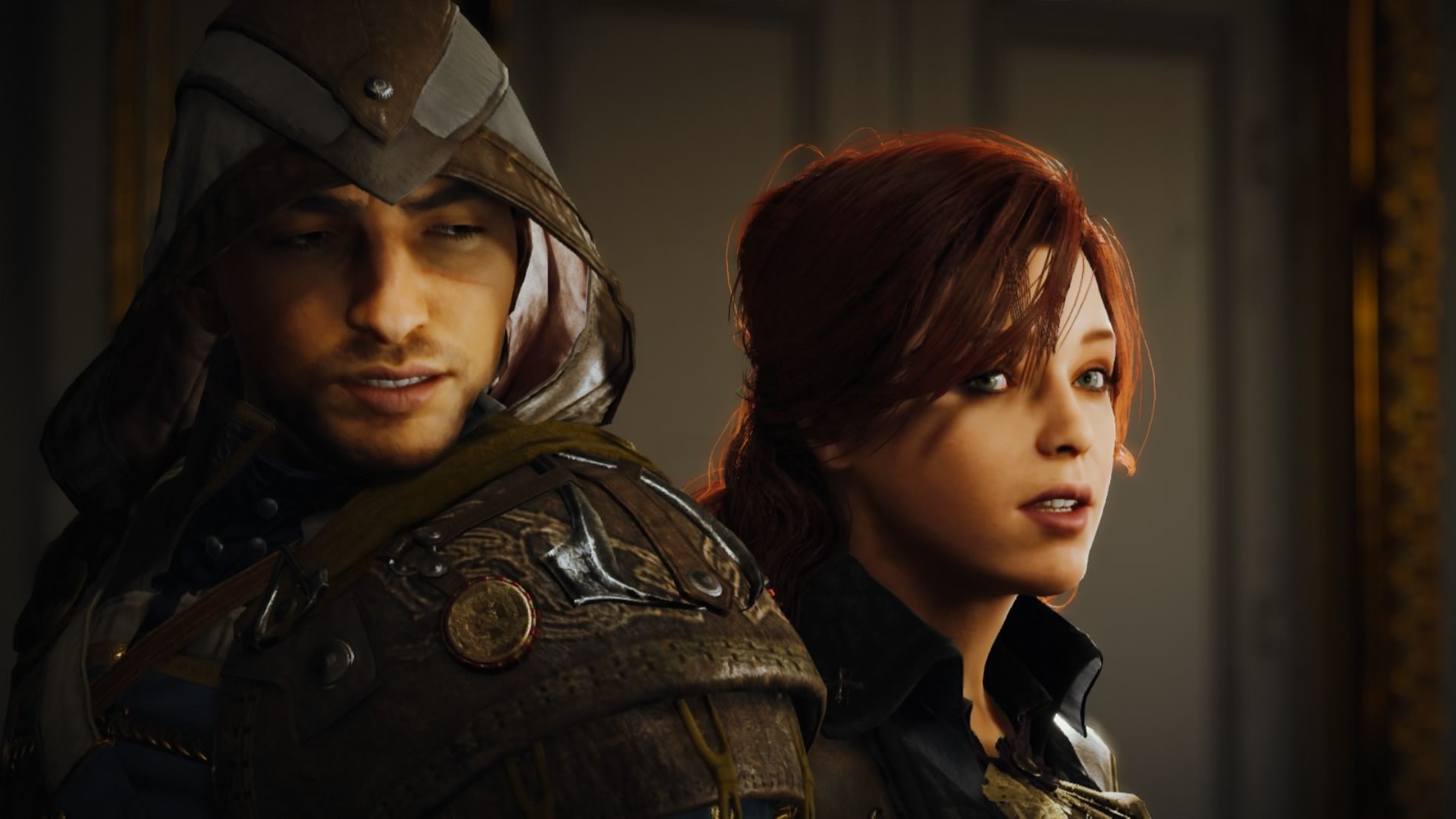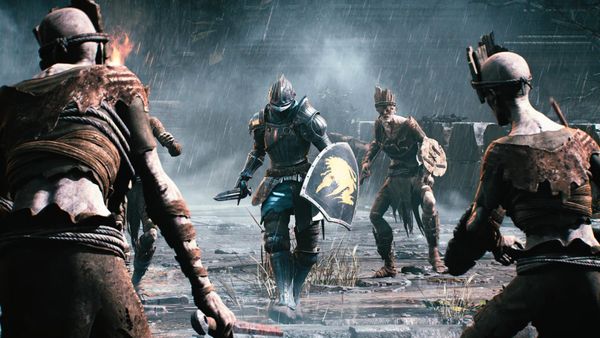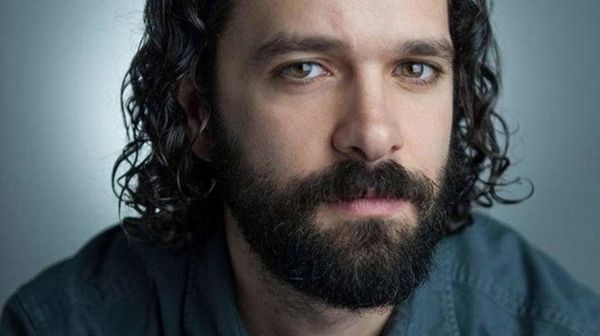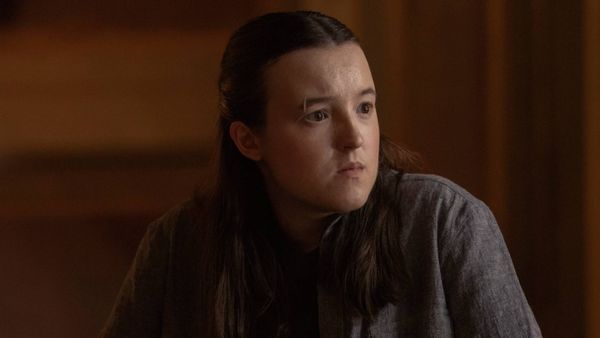Dead Kings is Assassin’s Creed Unity’s somber, more competent sequel
The main story of Assassin’s Creed Unity comes to an odd, anti-climax, leaving its protagonist Arno with no job, no place in the brotherhood, and a dead girlfriend. Dead Kings, the game’s first and only DLC, picks up directly where the main story ends and is so much better than the rest of the game it’s almost unbearable.
Dead Kings has the most cohesive environments, story, level design and combat in the game, second maybe to the Chrétien Lafrenière assassination. Arno heads to the rural Saint-Dennis to escape his demons (mostly at the bottom of a bottle). He makes a deal with his old pal the Marquis de Sade: Arno agrees to recover the manuscript of progressive humanist Nicolas de Condorcet, thought to be located in the tomb of Louis IX, in exchange for passage to Egypt.
After meeting the audacious child (and thief) Leon, Arno reluctantly decides to liberate Saint-Dennis from the military and mercenaries along the way. The rest of the story sees Arno crawling through murky tombs and crumbling precursor temples to stop a powerful artefact from falling into the hands of the ruthless Napoleon. It feels more akin to the tombs of Brotherhood and Revelations than anything else in the franchise, and not always for expected reasons.
In my retrospective on Unity I mentioned that the game feels like a soft reboot--that it explores so much of what II and Brotherhood concerned themselves with that it can feel unoriginal. And sometimes, borderline insulting. Arno and Ezio looking visually similar with identical personality archetypes is nearly inexcusable. But where this constant lack of originality burdens Unity, Dead Kings ditches a great deal of the game’s myriad ideas in favour of doing one thing very well. Rather than twenty empty side characters, Dead Kings has four named characters: Leon, Madame Margot, Napoleon, Phillippe Rose. Each character is provided enough screen time to make their mark, and each form a different foil for Arno.

Leon represents Arno’s past-self, his reckless youth and naivety. Madame Margot is the mother Arno never had, encouraging his paternal instincts and challenging his apathy. Rose is the dangerous raider leader, an extension of Arno’s nihilism and brutality. If Arno cannot salvage himself from grief, he may never find a way back. And Napoleon, oddly, represents the assassins. The institution manipulating events for his own gains, but spurred by motivations foreign to Arno, and increasingly disagreeable to the concept of liberty. These characters each have small, simple arcs. They do not demand great complexity or thought, allowing Arno’s interiority to take centre stage, finally.
Saint-Dennis is the most cohesive location in the whole of Unity, maybe all of Assassin’s Creed. I’ve tried to conjure a comparable area that’s atmosphere and sense of place so perfectly matches the expected tone of the world-building, but I can’t. The whole map feels like a completed thought. The easiest point of comparison is the muddy main road and surrounding areas of Valentine in Red Dead Redemption 2.
Everything in Valentine is crafted to tell you everything you need to know about this farm town on the frontier. It’s cowboys and cattle rustling out here, only a facade of civilisation on a good day. There’s law, sure, but they look away more often than not. The tavern is filled with equal parts cattle hands, outlaws and women of pleasure. Keep that pistol close by, and be ready to brawl if the whiskey is flowing.
Similarly, Dead Kings never explains Saint-Dennis to you, because it doesn’t need to. The smog-choked air is caused by the constant digging and unsettling of the earth. All the wealth in this part of the world left with the revolution, and the scraps of mercenaries and mining commandments linger. With industry run into the ground, people have reverted to uncovering the tombs of long-dead Kings, debasing these graves for even the faintest scrap of gold or silver. The game never stops to tell you this, nor does it appear in a database entry.
Conversely, Unity struggled to communicate and convey the nature of the revolution and its various impacts. In large part because the French revolution was very messy, so much so you should probably read the wikipedia article before playing the game, otherwise you’ll be lost more often than not. Dead Kings is the opposite, where there are so few layers of abstraction between the physical location and how it got that way you can instantly understand what’s going on.
Puzzles are also good. Which is unusual for any third-person action game, let alone Assassin’s Creed. They demand knowledge of history and attention to the surroundings. Again, they’re tied cleverly to the story’s themes. Dead Kings explores Arno’s loss of faith, mirrored by the sacrilege of raiders digging up Kings, the corpses of people once chosen by God to rule. The relationship gets muddy, but if you keep in mind the story is about Kings and faith, the puzzles slot into place. One sees you make the sign of cross with braziers, lighting the way to enlightenment. Another is a basic matching puzzle, but it feels satisfying, and simple enough that whoever built it would expect it to be solved handily without being too obvious.
This cohesion extends to the new weapon type introduced: the guillotine gun. First off, this thing looks gloriously brutal.
The gun fires large mortar shells which have a destructive area of effect. The axe-blade on its end lands with hefty, ugly crunches. Burying this thing into a mercenary’s skull always feels satisfying. This is for a handful of reasons. First, the animations suit the weapon far more than a lot of the other weapons in the game. To explain this requires some back-tracking.
As a game engine, Unity has a hard to identify problem that I didn’t realise was an issue until this weapon solved it. Blocking and parrying feels great in Unity, particularly with one handed weapons. But attacking periodically feels off. For the most part, because hitting the attack button doesn’t always fire off an attack that makes sense. When you have an enemy staggered next to a fence, Arno might do a full three sixty degree air twirl to bring his sword across their shoulder, rather than attacking with urgency or shoving with his shoulder to pin them. This happens constantly in combat. It’s never enough to be distracting, but it can feel at odds with how dangerous enemy weapons are. If Arno is constantly outnumbered and out-gunned, why isn’t he more brutal? More aggressive?
The guillotine gun solves this handily. Most of the time Arno is jabbing and stabbing with the axe-head to create an opening. And because of the weight, he needs to pivot in order to generate momentum to swing the weapon. Then it connects in spectacular fashion, and has clear weight. Arno always stumbles forward with each strike, as if the weapon is so dangerous it’s always seconds away from being out of his control.
The addition of the guillotine gun is both subtle and radical. It also compliments the new mechanics introduced in Saint-Dennis. Groups of tomb raiders skulk in the underground. They are far more numerous than any enemy in the game, but are also far weaker. They feel more like paper-men who you can one or two shot, but who will try and get a good hit in first. They’re almost no threat by themselves or in pairs, but in groups these raiders can quickly overwhelm Arno. Some groups have leaders, marked by a star over their head. If you kill the leader, some raiders will lose confidence and flee. This mechanic is executed with far more care in Unity’s grandson Ghost of Tsushima, but it's a welcome addition to Assassin’s Creed, which unfortunately never revisits the idea of intimidation in a meaningful way.
This is where the gun part of the guillotine gun comes in. The mortar shells do damage in a splash gradient, where the centre of explosion does the most, and less the closer to the edge of the circle until it fades into nothing. If the weapon had done a full area of effect circle of damage it might’ve been overpowered or broken the combat: there are very few situations where shooting the mortar at a group of enemies immediately isn’t an instant win.
Instead, with this splash zone of damage, you have to pick and choose the best time to use the mortar to maximise its tactical advantage. Fire it too soon and you might kill a few raiders, but fire it too late and you may kill none, only chipping away some health from everyone.
The difficulty of Dead Kings feels a lot more deliberate than the base game. High damage, low health enemies is where the combat feels the best. If you’ve focused your skill points and danger into making a stealth focused, high-damage glass cannon then all of Dead Kings feels like you’re squaring off with enemies who have similar tools to you. They beat you because they have larger numbers, or because they have learned to use these tools better than you have. It’s very satisfying, if occasionally buggy where the number of enemies on screen can cause frame hitches, hit-boxes to clip through bad guys and so on. The game also crashed so hard it completely uninstalled from my Playstation. So there’s also that.
Generally, the enemies and the new weapon encourage you to sneak in, hit hard, and vanish quickly. This style of combat mirrors the themes of the story well, yet another welcome surprise. Arno is, in a lot of ways, a shell of his former self. Gone is his glib, sharpshooting mouth. He’s stripped of his assassin rank, and starts the story in filthy, tattered raider clothes. Gone are the majestic assassin coats. This is a very different place for Arno, both physically and mentally. Oddly, Dead Kings forgoes the structure of the main game too. Gone are the blackbox missions entirely. Instead, you’re tossed into the open space of Saint-Dennis free to do whatever in whatever order. There’s no icons to tell you how to sneak into a tomb by creating a distraction, you just have to work it out yourself.
The training wheels come off because you, the player, are finally as experienced as Arno. You don’t need the HUD to tell you to throw coins at a crowd to distract the guards while you phantom blade a sentry so you can slip between a gap in the fence unseen. You don’t need a tooltip to focus on crowd control in large areas and locate choke points when the shit hits the fan. So while Arno might be a shadow of his former self, he’s never neutered. Not quite relegated to retirement, not yet.
The game raises the question of belief, and holds it central for its length. Napoleon’s unflinching conviction opposes Arno’s apathy and the abandonment of religious faith of Rose when defiling dead kings. Whether the narrative achieves any commentary is questionable. I don’t think there’s enough dialogue devoted to these ideas, but they occupy the subtext well enough. Arno never has a come to Jesus moment (excuse the pun) but he does relent in his apathy, allowing himself to care enough about Leon to throw himself back in the ring of do-good-ing, even if temporarily.
The narrative concludes with Arno deciding to stay in France. He even puts on his assassin coat again. This choice doesn’t undo the themes at play, but it muzzles the complexity underpinning Saint-Dennis. This redonning of his assassin garb is supposed to represent Arno re-entering the world. That this is achieved by putting on the clothes of an organisation that he could not trust is confused.
That the game’s answer to these complicated questions at the core of Arno’s grief is “he got over it” feels disingenuous. I understand these games are designed to appeal to the largest demographic they can, but such a solution is both unearned and uninteresting. A shame, given everything until the last moments of Dead Kings is excellent. Perhaps a more fitting visual representation would be a new outfit melding his history as an Assassin with his newfound care for the proletariat.
The story is about delving into the crumbling tombs to uncover secrets long past. Of diving into the past and trying to salvage something of value, the precise exercise Arno is attempting with the death of Elise. He is digging in the dirt for gold, now a ghost of his former self. So much so tomb raiders often mistake the pale, murderous Arno for the ghost of the deceased kings. This mirroring of theme and setting feels like Unity finally finding its footing. It creates compelling motivation and renders place and atmosphere with texture, with flavour. That this story takes place after the full game, and that it took the developers this long to hit their stride is a problem (also that time it crashed and uninstalled itself). But you should play Dead Kings. It’s the best part of the game, but I’m not sure if it’s worth digging through the dirt of the broader container, even if Dead Kings is pure gold.




